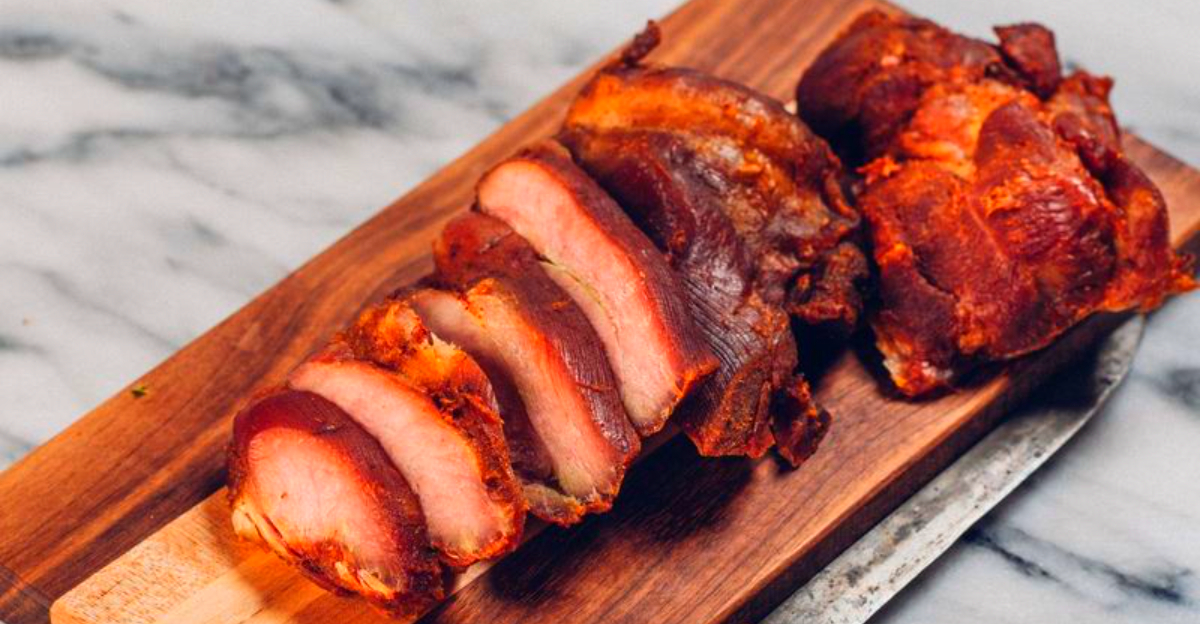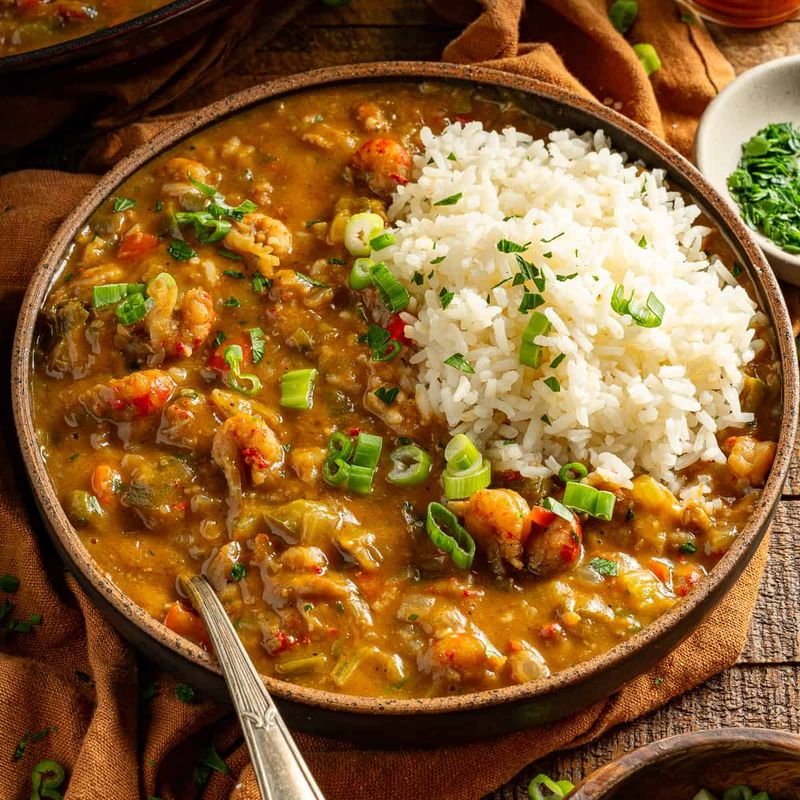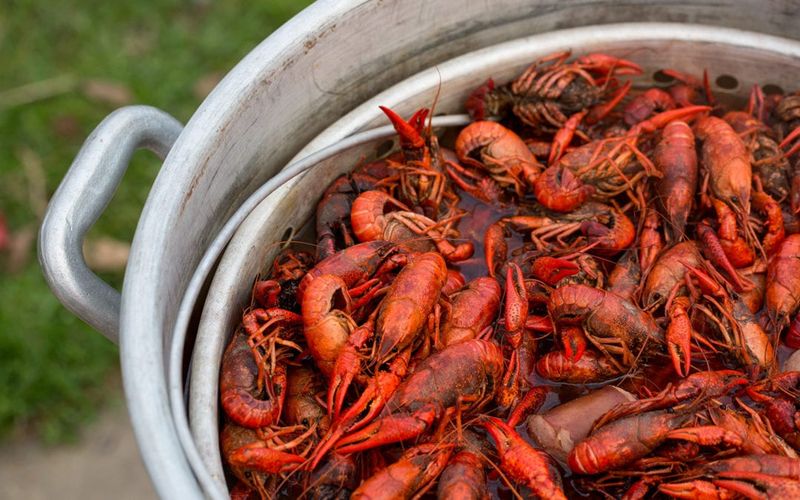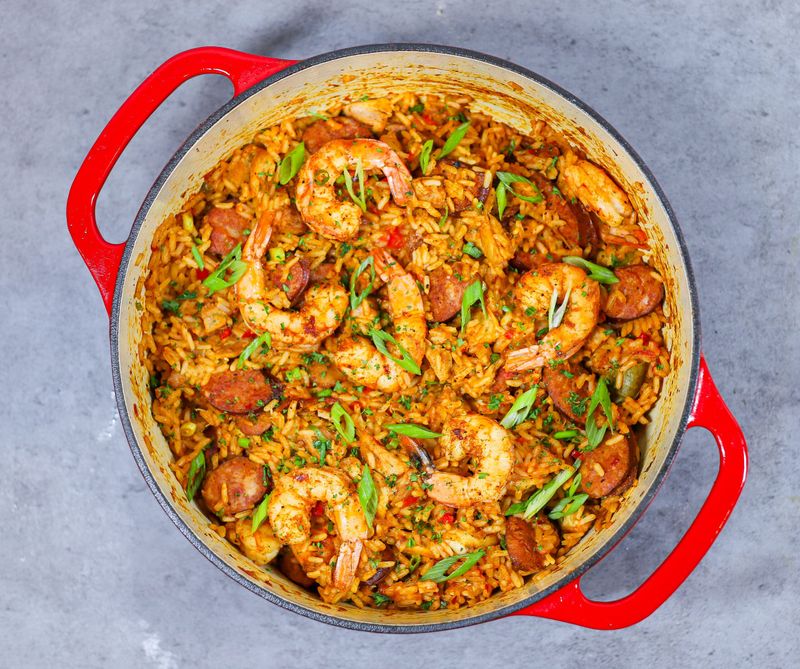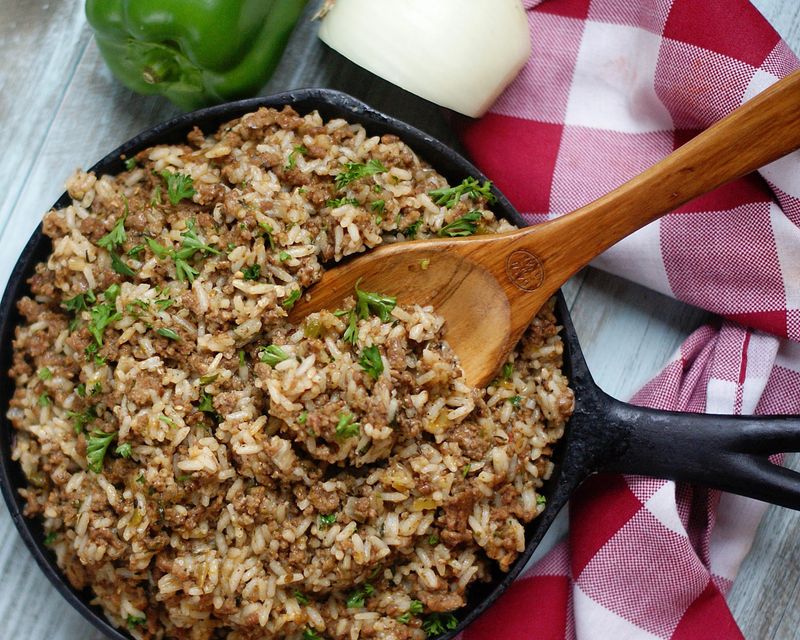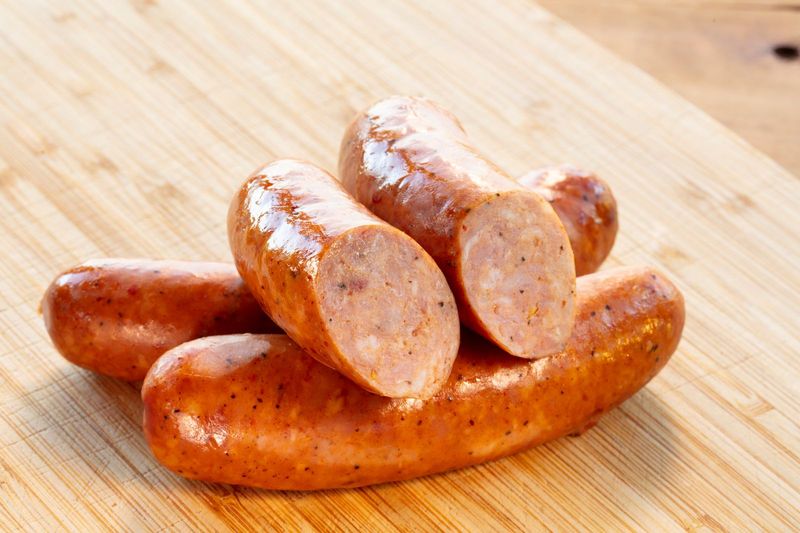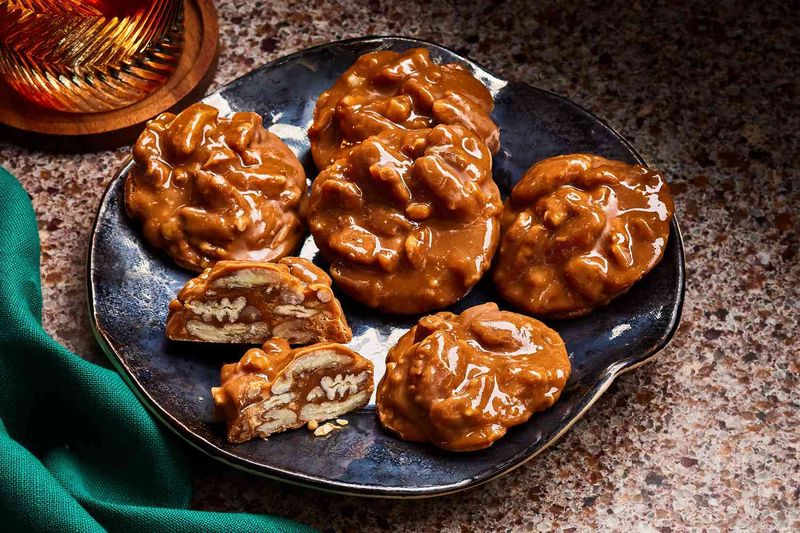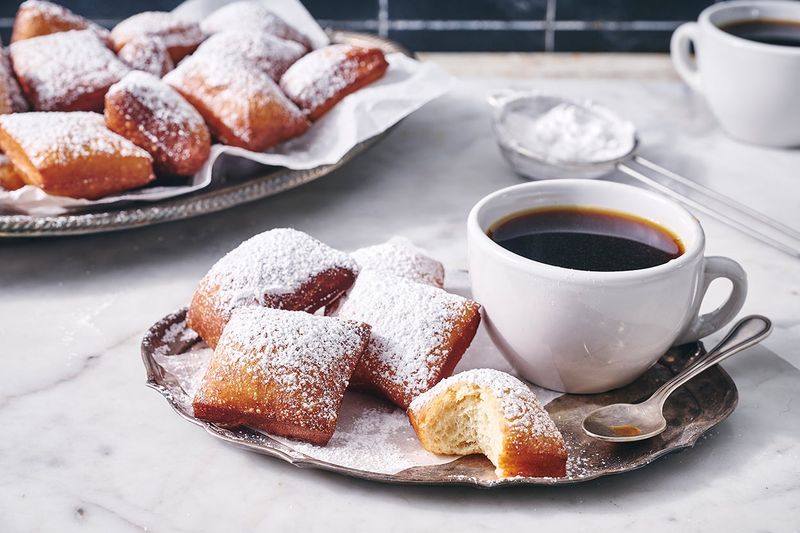Louisiana’s kitchen tells stories through every dish, blending French, Spanish, African, and Caribbean flavors into something truly magical. Walking into a New Orleans restaurant or Cajun eatery, you’ll quickly discover that pronouncing these beloved dishes correctly is almost as important as enjoying them. Nothing makes a local smile quite like hearing a visitor butcher the name of their favorite comfort food – it’s practically a rite of passage for anyone exploring the Bayou State’s incredible culinary landscape.
1. Gumbo
Picture this: you confidently stroll into a Louisiana restaurant and ask for “gum-BOW,” only to watch your server’s eyebrow raise slightly. Locals know it’s simply “GUM-boh,” pronounced with the emphasis on the first syllable and a soft ending.
Many outsiders also make the mistake of treating gumbo like regular soup, expecting it served in a simple bowl. The rice goes right into the bowl with the gumbo – never on the side. This hearty stew, built on a dark roux foundation, deserves respect for both its pronunciation and proper presentation.
Real gumbo takes hours to develop its deep, complex flavors through careful roux-making and patient simmering.
2. Étouffée
French pronunciation can trip up even the most confident diners, and étouffée is a prime example. Visitors often stumble with “ET-oo-fee,” but locals glide through “ay-too-FAY” like it’s second nature.
This “smothered” dish – which is exactly what étouffée means in French – features crawfish or shrimp swimming in a rich, roux-based sauce. The holy trinity of onions, celery, and bell peppers creates the flavor foundation. Always served over a bed of fluffy white rice, never alongside it.
Getting the pronunciation right shows respect for the dish’s French Acadian roots and the generations of cooks who perfected this comfort food classic.
3. Crawfish
Nothing identifies an outsider faster than hearing “CRAY-fish” roll off their tongue. Born-and-raised Louisianians have been saying “CRAW-fish” since they could walk, and they’ll gently correct you with a knowing smile.
These mudbugs aren’t just about pronunciation – timing matters too. Fresh crawfish season runs roughly from late winter through early summer. Ordering frozen or imported crawfish during peak season is like asking for ketchup on gumbo.
Real crawfish boils happen in massive pots outdoors, seasoned with cayenne, garlic, and secret spice blends passed down through families. The social aspect is just as important as the eating.
4. Jambalaya
Tourists confidently order “jam-ba-LIE-a,” but locals know it sounds more like “jum-buh-LIE-uh” or “jum-buh-LAY-uh,” depending on which part of Louisiana you’re visiting.
The bigger mistake? Assuming all jambalaya is the same. Creole jambalaya from New Orleans features tomatoes, giving it a reddish color, while Cajun jambalaya from rural Louisiana stays brown without any tomatoes. Both are delicious, but mixing them up reveals your outsider status immediately.
Each family guards their jambalaya recipe fiercely, with variations passed down through generations and heated debates over proper ingredients and cooking methods at every family gathering.
5. Po’boy
Calling it a “POE-boy” immediately marks you as a tourist. Locals say “PO-boy” with a quick, soft pronunciation that flows naturally in conversation.
The bread makes or breaks this sandwich – authentic po’boys require New Orleans French bread with its distinctive crispy crust and airy interior. Regular hoagie or sub rolls simply won’t do. The bread should be so fresh it cracks when you squeeze it, creating the perfect vessel for fried oysters, shrimp, or roast beef debris.
When ordering “dressed,” you’ll get lettuce, tomatoes, pickles, and mayonnaise. Skip the fancy condiments – this working-class sandwich keeps things simple and satisfying with quality ingredients and proper technique.
6. Dirty Rice
Outsiders often assume dirty rice gets its name from looking messy, or worse, think it’s just rice mixed with ground beef. Louisiana cooks know the “dirty” color comes from chicken livers and giblets mixed with the holy trinity of vegetables.
This humble side dish transforms simple white rice into something rich and flavorful through careful seasoning with Cajun spices. The chicken liver might sound intimidating to some, but it creates an earthy depth that regular ground meat can’t match.
Proper dirty rice should have a slightly grayish-brown color and a complex flavor that complements rather than competes with your main dish. It’s comfort food that tells the story of resourceful cooks making magic from simple ingredients.
7. Boudin
Most visitors stumble over boudin, often over-pronouncing it as “boo-DAN” with a hard ending. Locals say it softly – “boo-DAN” with barely a whisper of the final “n,” sometimes dropping it entirely.
This Cajun rice-and-pork sausage isn’t fancy restaurant food – it’s grab-and-go comfort found at gas stations, meat markets, and roadside stands throughout Acadiana. You’ll often see locals eating it right from the casing while standing in parking lots.
Real boudin contains rice, pork, onions, and seasonings stuffed into natural casings. Some varieties include liver for extra richness. It’s working-class food that fuels long days and brings people together over shared appreciation for simple, satisfying flavors.
8. Andouille Sausage
The French influence shows clearly here – visitors say “ANN-doo-ee” while locals pronounce it “ahn-DOO-ee” with that distinctive nasal quality that comes from Louisiana’s French heritage.
This isn’t just any smoked sausage. Real andouille gets cold-smoked for hours, developing a deep, complex flavor that’s essential in authentic gumbo and jambalaya. The texture should be firm but not tough, with a satisfying snap when you bite into it.
Many grocery store versions labeled “andouille” are really just spiced kielbasa. True Louisiana andouille has a distinctive taste and texture that comes from traditional smoking methods and specific spice blends that have been perfected over generations of sausage makers.
9. Tasso
Newcomers often pronounce this literally as “TASS-oh,” but locals know it’s “TAH-soh” with that soft, French-influenced pronunciation that characterizes so much Louisiana cuisine.
Tasso isn’t meant to be eaten like regular ham – it’s intensely seasoned and smoked pork used primarily for flavoring other dishes. Just a small amount adds incredible depth to beans, vegetables, and stews. Think of it as a seasoning meat rather than a main ingredient.
Traditional tasso gets heavily seasoned with cayenne and other spices before being cold-smoked until it develops an almost jerky-like texture. A little goes a long way in adding authentic Louisiana flavor to your cooking.
10. Pralines
Walk into any Louisiana sweet shop and ask for “PRAY-leens,” and you’ll immediately identify yourself as an outsider. Locals have always said “PRAH-leens” with that distinctly Southern pronunciation.
These aren’t the crispy European pralines – Louisiana pralines are soft, creamy confections made with sugar, cream, butter, and pecans. The texture should be smooth and almost fudge-like, not hard or crunchy. Street vendors in the French Quarter have been perfecting this candy for generations.
The best pralines have a perfect balance of sweetness and nuttiness, with pecans distributed throughout rather than just sprinkled on top. They’re a true taste of Louisiana’s French colonial heritage adapted to local ingredients and climate.
11. Beignets
Café du Monde has heard it all – tourists saying “beg-NETS” or “BAY-nets” when the correct pronunciation is closer to “ben-YAY” with that French flair that honors the dish’s origins.
These aren’t just any fried doughnuts. Real beignets are square, made from choux pastry, and arrive at your table buried under an avalanche of powdered sugar. Getting sugar all over yourself is part of the authentic experience – embrace the mess.
The dough should be light and airy inside with a slightly crispy exterior. Served hot and fresh, they pair perfectly with café au lait for the quintessential New Orleans breakfast that locals and tourists alike have enjoyed for over 150 years.
12. Maque Choux
Most visitors take one look at “maque choux” and give up entirely, while others might attempt some version of “MACK-ee CHOW.” Locals know it’s pronounced “mock SHOE” – much simpler than it appears on paper.
This traditional Cajun side dish features fresh corn cut from the cob, cooked down with onions, bell peppers, and tomatoes until creamy and rich. Some versions include cream or butter for extra richness. It’s comfort food that showcases Louisiana’s agricultural heritage.
The name comes from Native American origins, reflecting the cultural exchange between indigenous peoples and Acadian settlers. When corn is in season, maque choux appears on tables throughout Louisiana as the perfect accompaniment to almost any main dish.
